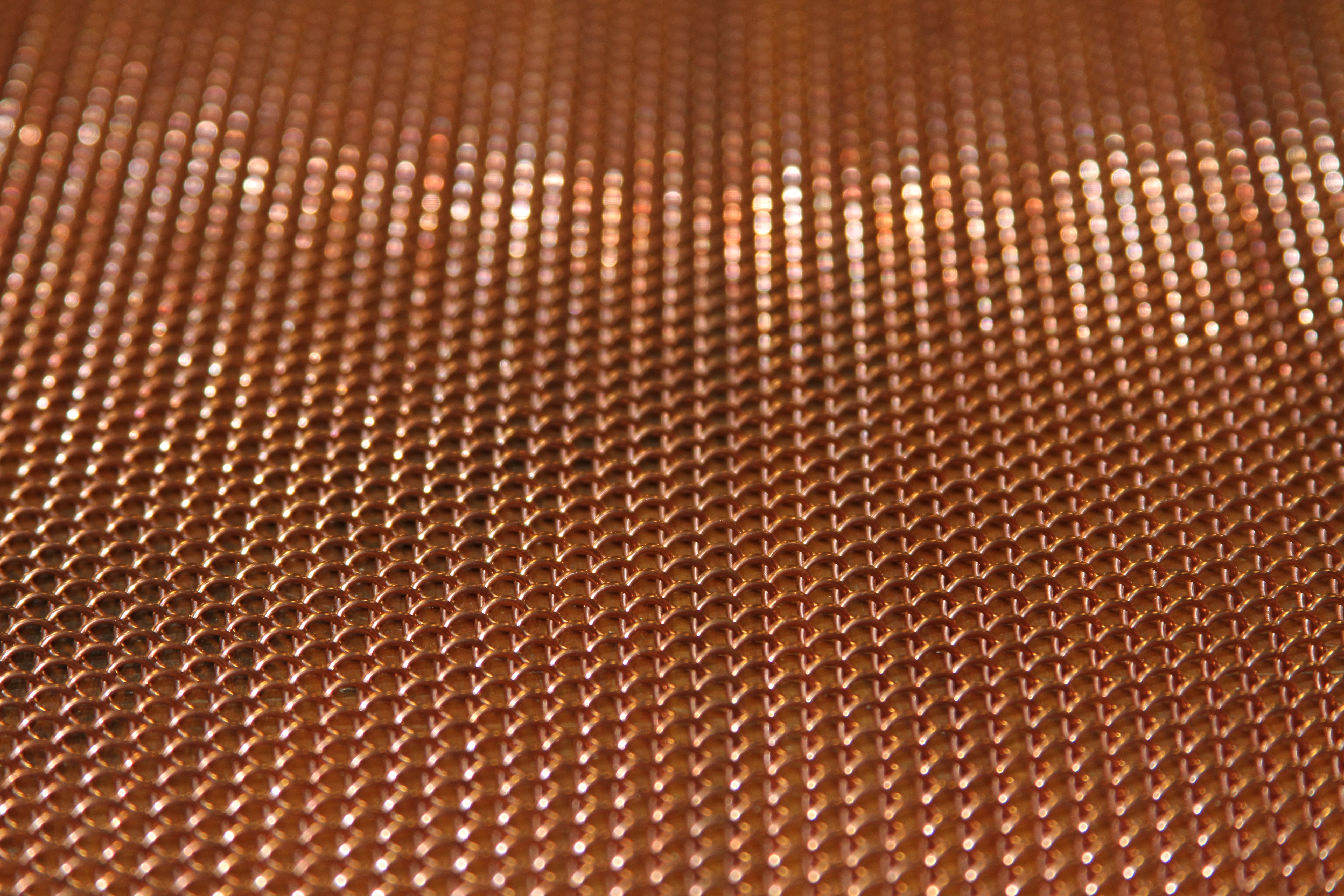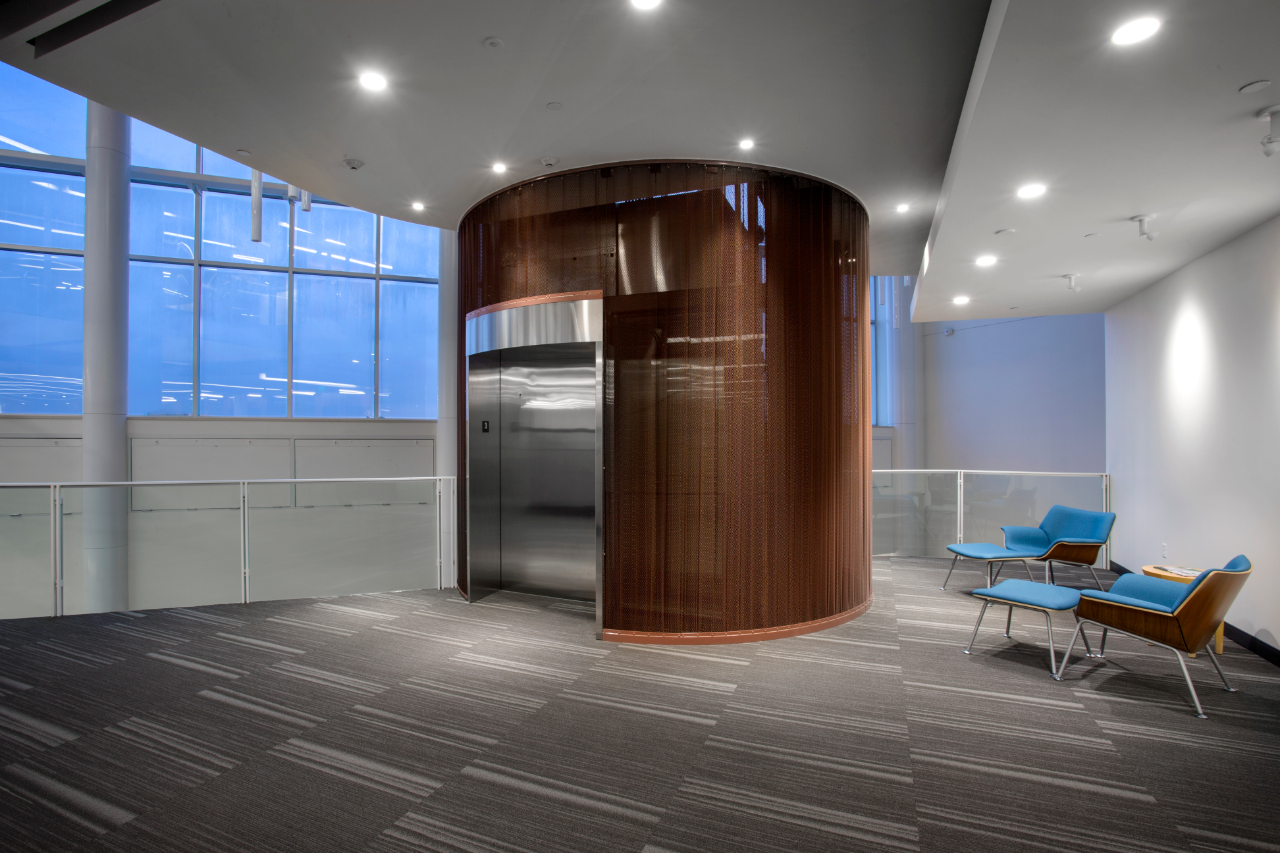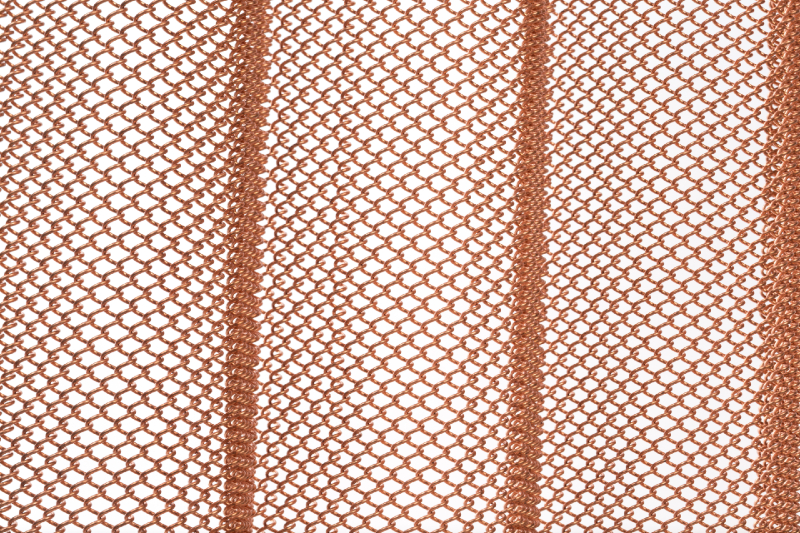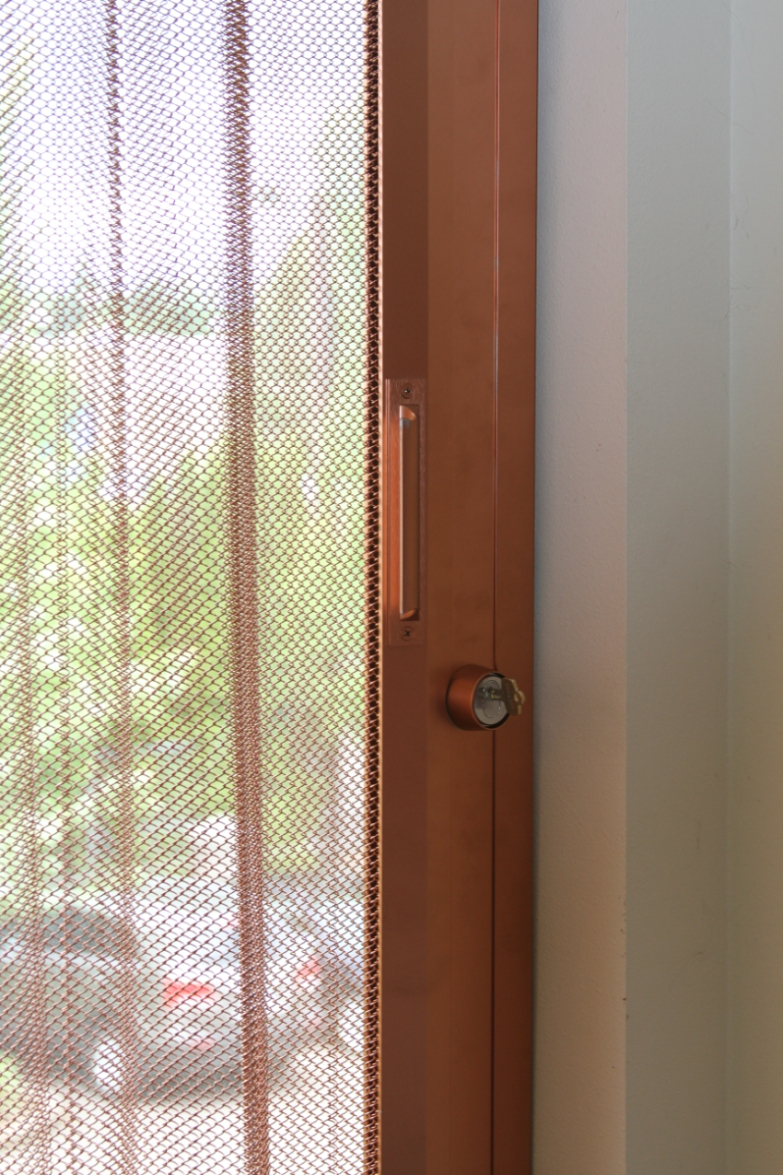Copper-Clad Steel Fabricoil
Antimicrobial Characteristics of Copper-Clad Steel Fabricoil®
The Covid-19 pandemic has brought dramatic attention to the ways that viruses and bacteria can be spread or contained among people around the world. Here we look at one particular aspect of addressing such health concerns, namely, how can we shorten or reduce the amount of time that bacteria or viruses can survive on surfaces that people touch.
The Issue:
Airborne transfer of germs and bacteria has received a lot of attention but there has also been an increasing focus on the role that the things we touch with our hands can play on our health. Specifically, if bacteria from an infected person is deposited on a surface (such as a wall surface, door handle, furniture, equipment, etc.), then when a healthy person comes along and touches that surface they are prone to pick up that infectious bacteria onto their hands. If that bacteria then gets transferred to something they are eating or drinking, or enters their body when they rub their eyes or nose, then they can become infected as well. Frequent hand-washing is offered as way to protect against becoming infected but while that may interrupt the process, it doesn’t eliminate the core problem. It also requires constant diligence on the part of those who want to be protected. Finding ways to control or eliminate the spread of disease like this is becoming increasingly important in hospital settings as we might expect. But it is also emerging as a significant concern anywhere there is an unwanted risk of people becoming sick such as retirement communities, assisted living facilities, spa/wellness centers, schools, public buildings, and even in private residences.The Challenge:
The World Health Organization (WHO) has drawn attention to a growing realization that hospital patients are being infected with diseases while they are still in the hospital. Among the possible reasons for the rise in these hospital acquired infections (HAIs) is the indoor environment where up to 80 percent of infectious diseases have been found to be transferred by touch. (Tierno, 2001). Most disturbing is that each year in the U.S. alone, HAIs have been documented to claim on the order of 100,000 lives. That makes HAI‐related deaths more prevalent than diabetes, influenza, pneumonia, AIDS, breast cancer or Alzheimer's disease. Put another way, that’s the equivalent of one jumbo jet full of passengers dying every day. To make matters worse, it is costing a tremendous amount of money to treat those infections, upwards of $45 Billion nationally. That’s nearly $30,000 a day at every hospital in the United States just to treat infections that shouldn’t be happening in the first place.The Solution:
The most prevalent strategy to combat this problem is to use materials that kill or stops the growth of microorganisms on as many touchable surfaces as possible. The term antimicrobial has been used to generically describe such materials or products that have been shown through testing to have that capability. One such material is copper, whether in pure form or in an alloy such as brass, bronze, or copper-nickel alloy. These metals have been known throughout history to be attributed with reducing illness, although it is only in recent times that germs and bacteria have been understood to be the cause of such illnesses. The current science behind the antimicrobial effects of copper suggests that it affects tested bacteria in two sequential steps: the first step is a direct interaction between the surface and the bacterial outer membrane, causing the membrane to rupture. The second is related to these rupture holes in the outer membrane, through which the cell loses vital nutrients and water, causing a general weakening of the cell to the point of killing off the bacteria altogether.It is important to note that antimicrobial products marketed and sold in the U.S. are regulated by the Environmental Protection Agency (EPA) to ensure the products are safe to use, and that advertising claims about protecting public health, and efficacy against specific pathogens, are supported by rigorous testing under EPA-approved protocols (e.g. continuously kills >99.9% within 2 hours of contact between routine cleanings). In that regard, copper alloy materials are registered by EPA (Reg. Nos. 82012-1 to 6) to make public health claims against six specific bacteria:
- E. coli O157: H7, a food‐borne pathogen that has been associated with large‐scale food recalls;
- MRSA (Methicillin‐Resistant Staphylococcus aureus), one of the most virulent strains of antibiotic‐resistant bacteria and a common culprit of hospital‐ and community‐acquired infections;
- Staphylococcus aureus, the most common of all bacterial staphylococcus (i.e. staph) infections that can cause life threatening diseases, including pneumonia and meningitis;
- VRE (Vancomycin‐Resistant Enterococcus faecalis ), an antibiotic resistant organism responsible for 4% of all Healthcare‐Associated Infections;
- Enterobacter aerogenes, a pathogenic bacterium commonly found in hospitals that cause opportunistic skin infections and impacts other body tissues;
- Pseudomonas aeruginosa, a bacterium that infects the pulmonary tracts, urinary tracts, blood, and skin of immunocompromised individuals.

While copper has been shown to be very effective at killing, in a matter of hours, the six specific bacteria above there is very limited information and testing available on COVID-19 or other similar coronavirus microbes. The EPA Antimicrobial Stewardship Website for Copper Alloys has issued some clarifying statements in this regard. (https://www.copperalloystewardship.com/COVID-19_Position1/2) “Media reports and public inquiries to CDA have noted several independent studies reporting antimicrobial efficacy of uncoated copper and copper alloy surfaces against human pathogens, including one strain of coronavirus (HuCoV-229E) reported in mBio by Warnes et al(citation (https://doi.org/10.1128/mBio.01697-15).There also has been widespread media coverage of a recent U.S. government-funded study conducted by researchers at the National Institutes of Health and the Centers for Disease Control and Prevention (CDC) reporting that the SARS-CoV-2 virus, which causes the disease COVID-19,remained viable for up to 2 to 3 days on plastic and stainless steel surfaces vs. up to 4 hours on copper. (citation: https://www.medrxiv.org/content/10.1101/2020.03.09.20033217v1.full.pdf) Considering the limited evidence against SARS-CoV-2 referenced above, further testing would be required to assess the effectiveness of copper surfaces, and to support EPA-registered product label claims against SARS-CoV-2”
An Application:
Copper-Clad Steel Wire is an innovative product that can be incorporated into building interiors as part of an overall design scheme and for its demonstrated antimicrobial properties. It uses pure copper metallurgically bonded to the surface of low carbon steel wire. The Copper-Clad Wire exhibits a brilliant red polished finish when extruded in a continuous solid-cladding process. However, if left bare and untreated the wire’s appearance will slowly change to brownish hues and ultimately a grey/green patina. Left in its natural form Copper-Clad Steel wire is naturally antimicrobial resulting in increased public health safety but also increased durability and beautiful aesthetics. By applying a thin layer of clear automotive lacquer, the bright salmon color can be maintained if desired, although it may reduce its antimicrobial effects. Copper-Clad wire conforms to ASTM standards for both interior and exterior applications and is available in a wide variety of wire gaugesThe Results:
Cascade Architectural offers solutions to increase life/health safety and security in response to the urgent needs for additional medical capacity due to the COVID-19 virus outbreak. There are many design situations where a need arises to provide a degree of separation for safety or different uses where a solid wall or partition is not needed. In fact, it may even be desirable to provide for some connectivity between spaces for visual, airflow, sound, or other considerations. An emerging, innovative choice is the use of coiled wire fabric as a versatile product with wide-ranging applications and functions. It is a durable, thin material that is lighter in weight than traditional free-standing partitions and offers more design flexibility. For interiors, architects and engineers can use coiled wire fabric for curtains, ceiling treatments, wall coverings, security gates, and even as complete partitions. They are available with a range of attachment systems, allowing for different building conditions and finish treatments.For more information about using copper clad steel wire fabric on a particular project, visit cascade-architectural.com





